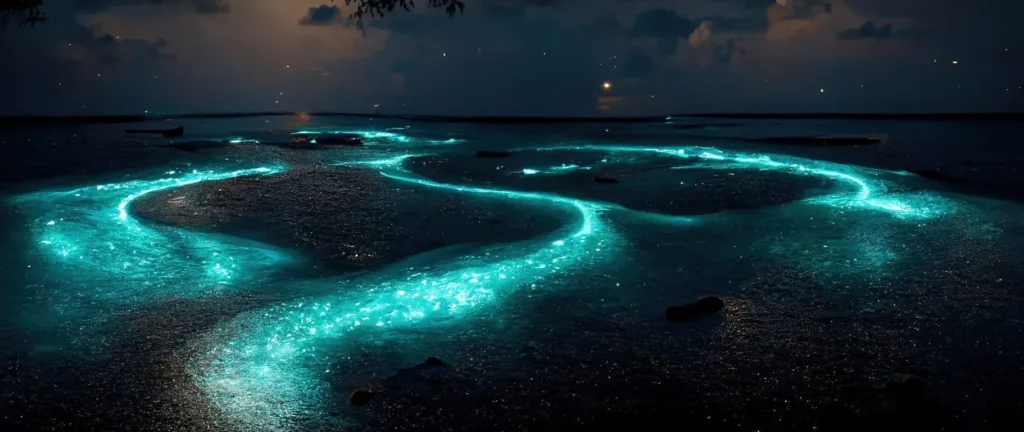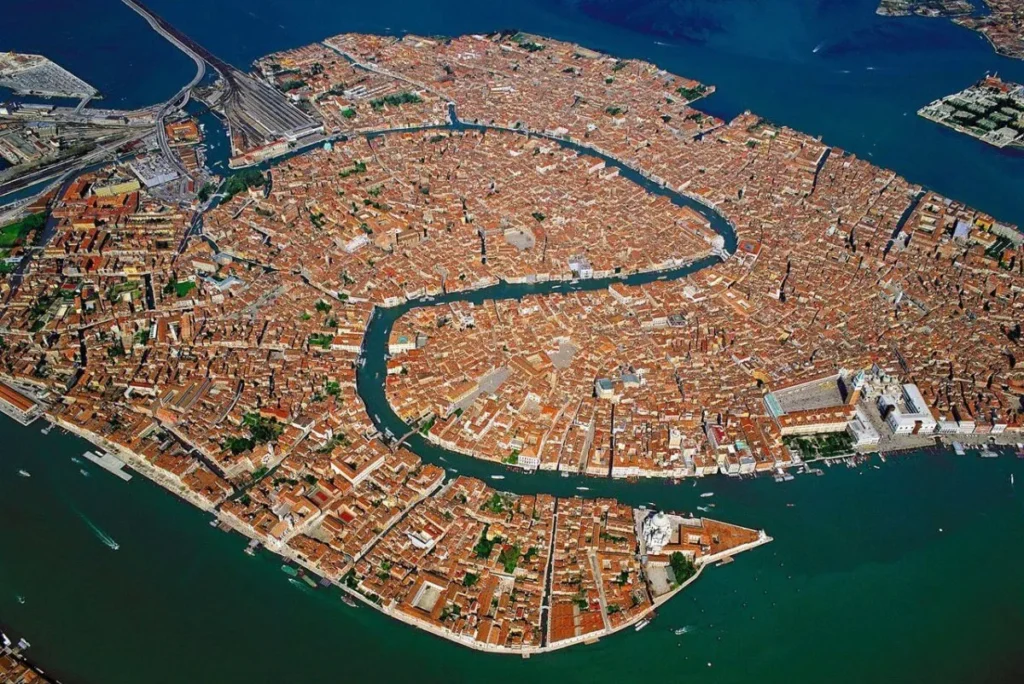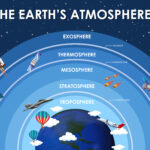“The Earth has music for those who listen.” – William Shakespeare
Introduction
Have you ever wondered about the world’s most astonishing geography facts? Geography is more than just maps and landscapes—it’s a gateway to the planet’s most incredible wonders! From strange weather patterns to unbelievable land formations, geography offers a plethora of surprises. From fish raining from the sky in Honduras to islands bigger than entire countries, our world is filled with surprising and fascinating geographical phenomena.
Whether it’s the hottest deserts, the coldest inhabited places, or the smallest countries, every corner of Earth has a story that defies expectations. Did you know there’s a place in the USA where you can stand in four states simultaneously? Or might the longest river in the world not be what you think it is?
In this article, we’re diving into 24 astonishing, fun geography facts that will leave you amazed and offer a fresh perspective on the planet we call home. Get ready to explore and uncover the remarkable secrets that make Earth extraordinary!
Unbelievable Landmarks and Locations
Geography is filled with landmarks and places that defy logic and amaze us with their natural and human-made beauty.
1. Four Corners Monument: Stand in Four States Simultaneously
In the Southwestern USA, the Four Corners Monument is the only place where four states meet: Arizona, Colorado, New Mexico, and Utah. It’s the perfect spot for a unique photo opportunity!
Key Takeaway: The USA is home to unique geographical intersections, making it a destination for adventure and exploration.
2. The Great Blue Hole: A Giant Sinkhole in Belize
The Great Blue Hole off the coast of Belize is an underwater sinkhole that’s more than 300 meters across and 125 meters deep. Its circular formation is so precise that it looks like humans made it, but it’s entirely natural.
Fun Fact: You can even dive into the Great Blue Hole and explore its marine life and ancient stalactites!
Incredible Natural Phenomena
Nature has a way of surprising us, and these fun geography facts show how astonishing it can be.
3. The Northern Lights: Nature’s Dazzling Light Show
The Northern Lights or Aurora Borealis occur in the Arctic Circle, offering a stunning display of colorful lights in the sky. This natural phenomenon is caused by the collision of solar particles with the Earth’s magnetic field.
Key Takeaway: Witnessing the Northern Lights is on many people’s bucket lists, as they showcase nature’s pure beauty and power.
Read also: 6 Best Places to See the Northern Lights
4. The Ever-Moving Stones of Death Valley
Mysterious rocks in California’s Death Valley move independently, leaving long tracks behind them. Scientists believe these stones move due to a combination of ice, wind, and water, proving that geography can surprise even the experts!
5. The Bioluminescent Bays
In places like Puerto Rico, bioluminescent bays light up at night. The glow comes from tiny plankton called dinoflagellates that emit light when disturbed.

Record-Breaking Geographical Features
The Earth is full of record-breaking features that continue to astonish scientists and explorers alike.
| Geographical Feature | Record | Location |
| Nile River | Longest River | Egypt |
| Mount Everest | Highest Mountain | Nepal |
| Antarctic Desert | Largest Desert | Antarctica |
| Pacific Ocean | Largest Ocean | Covers over 63 million sq. miles |
| Dead Sea | Lowest Point | Jordan and Israel |
6. The Nile vs. Amazon: The Battle of the Longest Rivers
The Nile River was the world’s longest river, stretching over 4,100 miles for years. However, some recent studies argue that the Amazon River is longer when considering its tributaries.
Interesting Fact: The debate continues as scientists use different methods to measure these mighty rivers.
7. Mount Everest: The Tallest Point on Eart
Mount Everest, standing at 29,032 feet above sea level, is the ultimate challenge for climbers worldwide. Yet, its height is still growing due to the tectonic activities beneath it.
8. The Lowest Point: The Dead Sea
Located between Jordan and Israel, the Dead Sea is Earth’s lowest elevation on land, at 1,412 feet below sea level. Its waters are so salty that floating is almost effortless!
Read also: Discover the Dead Sea: 5 Surprising Health Benefits of This Salty Wonder
Fascinating Facts About Countries and Cities
Countries and cities have some of the most fun geography facts that highlight the diversity of our world.
9. Monaco: The Second Smallest Country in the World
Monaco is only 0.78 square miles in area, making it the second smallest country after Vatican City. Despite its size, it’s one of Earth’s wealthiest and most densely populated places.
Fun Fact: Monaco’s coastline measures less than 4 miles, but it attracts millions of visitors annually!
10. Istanbul: A City on Two Continents
Istanbul, Turkey’s largest city, is located between Europe and Asia. The Bosphorus Strait separates the two sides, making Istanbul the only city on two continents.
11. Venice: The City with the Most Bridges
Venice may come to mind, but Hamburg, Germany, takes the crown with over 2,500 bridges, making it the city with the most bridges in the world!

Unique Climate and Weather Patterns
Our planet’s diverse climate and weather patterns contribute to some of the most surprising and fun geography facts.
12. The Driest Place on Earth: Atacama Desert, Chile
The Atacama Desert in Chile is known for being the driest place on Earth, receiving less than 0.6 inches of rainfall annually. Some parts of this desert haven’t experienced rain for centuries, making it a unique and extreme environment.
Takeaway: Even in the driest conditions, life manages to survive. Certain plants and animals have adapted to thrive, illustrating nature’s resilience.
13. Hottest Recorded Temperature: Death Valley, USA
Death Valley, California, has one of the most astonishing geography facts—it’s the hottest place on Earth, with a record temperature of 134°F set in 1913. In summer, temperatures often soar above 120°F, creating a challenging environment for life.
Takeaway: Extreme heat in places like Death Valley highlights the intensity of Earth’s climate and showcases the diversity of geographical conditions worldwide.
Read also: 5 Most Extreme Climates on Earth That Make Survival Impossible
14. The Rain of Fish in Honduras
One of the most bizarre fun geography facts occurs in Yoro, Honduras, where an annual phenomenon called Lluvia de Peces (the “Rain of Fish”) occurs. While locals see it as a miracle, scientists believe waterspouts lift fish from the ocean and drop them inland.
This fascinating geography fact shows how unusual and unpredictable nature can be!
Unusual Islands and Continents
15. Australia: A Country, Continent, and Island
Regarding fun geography facts, Australia stands out as the only place on Earth that is simultaneously a country, a continent, and an island. This geographical marvel offers an incredible range of ecosystems, from vast deserts to lush tropical rainforests. It’s one of those geography facts that showcases the unique diversity of our planet.
Fun fact: Australia boasts over 10,000 beaches. If you visited one beach every day, it would take you more than 27 years to see them all!
Read also: Discover Floating Island: A Unique Natural Wonder
16. Disappearing Island of Java
Java Island, located off the coast of Indonesia, is another fascinating entry in the world of fun geography facts. Known for its intense volcanic activity, Java has seen parts of its land disappear due to rising sea levels and eruptions. It’s a powerful reminder of the dynamic nature of our geography and the forces that shape our planet.
More Astonishing & Fun Geography Facts
17. The Smallest Country: Vatican City
Vatican City is the world’s smallest independent state, covering just 0.17 square miles. Despite its tiny size, this fascinating place is steeped in history and houses iconic landmarks like St. Peter’s Basilica. It’s one of those fun geography facts that show how even the smallest places can hold incredible significance.
18. Earth’s Largest Coral Reef: The Great Barrier Reef
Stretching over 1,429 miles, Australia’s Great Barrier Reef is Earth’s largest coral reef system. Visible from space, it hosts an astonishing variety of marine life. This is a geography fact that truly highlights Earth’s natural wonders.
Read also: 6 Reasons Why Is the Great Barrier Reef Important?
19. The World’s Longest Place Name
The longest official place name is found in New Zealand: Taumatawhakatangihangakoauauotamateaturipukakapikimaungahoronukupokaiwhenuakitanatahu.
This Maori name describes a hill and translates roughly to “the place where Tamatea, the man with the big knees, who slid, climbed and swallowed mountains, played his flute to his loved one.” It’s a fun fact that’s a mouthful!
20. Lake Superior: An Inland Sea
Lake Superior, one of North America’s Great Lakes, is so vast that it could cover North and South Carolina combined. As the largest freshwater lake by surface area globally, it’s one of those geography facts that showcase the immense scale of our natural landscapes.
21. Salar de Uyuni: The World’s Largest Mirror
Salar de Uyuni in Bolivia is the world’s largest salt flat. After rainfall, this vast expanse turns into a natural mirror, reflecting the sky and creating a surreal, otherworldly landscape. This fun geography fact highlights one of Earth’s most mesmerizing spectacles.

22. A River that Boils
Deep within the Amazon Rainforest lies the Shanay-timpishka, a river that reaches boiling temperatures of 200°F. The indigenous people regard it as sacred. It’s one of those geography facts that defy what we think is possible.
23. Africa’s Moving Desert: The Sahara
The Sahara Desert isn’t just the world’s largest hot desert; it’s also growing. This vast desert expands by approximately 30 miles yearly, gradually encroaching on the surrounding savannas. This is one of those fun facts that reveal the ever-changing nature of our planet’s geography.
24. Earth’s Magnetic North Is Moving
Did you know the magnetic North Pole is on the move? It’s shifting from Canada towards Russia at about 25 miles per year, influencing navigation systems and migratory animals. This fascinating fact about geography demonstrates the dynamic forces at work on our planet.
Key Takeaway
Geography is full of fascinating, mind-blowing, and fun facts beyond what we learn in textbooks. From rivers with no bridges to shrinking oceans, the Earth continues to surprise us with its endless wonders. These fun facts teach us more about the world and make great trivia!
Conclusion
Geography is more than just maps and coordinates; it’s a treasure trove of astonishing and fun facts that continue to surprise and fascinate us. Whether exploring natural phenomena like the Northern Lights or marveling at geographical records such as the tallest mountain or largest ocean, there’s always something new to discover. Next time you plan a trip or explore a map, think about these fun geography facts and the wonders of our incredible planet!
FAQs
1. Why is Antarctica considered a desert?
Despite being covered in ice, Antarctica is classified as a desert because it receives very little precipitation—less than 2 inches per year.
2. What is the driest place on Earth?
The Atacama Desert in Chile is the driest place on Earth, with some parts receiving less than 0.6 inches of yearly rainfall. Certain regions haven’t seen rain for over 500 years.
3. Where is the coldest inhabited place on Earth?
Oymyakon, Russia, is the world’s coldest inhabited place. In 1933, temperatures there dropped to a staggering -89.8°F.
4. What is the smallest country in the world?
The Vatican City is the smallest country in the world, covering only 0.17 square miles. It’s also the spiritual center for millions of Catholics worldwide.
5. Why does it rain fish in Honduras?
This phenomenon, known as Lluvia de Peces, occurs when waterspouts carry fish from the ocean and deposit them inland. It’s been happening annually for over a century.
6. How many bridges does Hamburg have?
Hamburg, Germany, has over 2,500 bridges, surpassing cities like Venice and Amsterdam. It’s known as the city with the most bridges in the world.





